Segmentation as it is. Part 2
The previous part dealt with the types of segmentation that are available at the initial stage of working with subscribers. That is, based on basic information, before interacting with your brand.
In continuation of the topic, we will talk about working with data that was the result of the subscriber’s interaction with your newsletters and the site. And how Finish Line increased sales through segmentation by 50%.

Photo by Rob Sinclair (Flickr)
Analyze the statistics of several previous mailings, in particular, the map of clicks. This will help you determine what the particular user likes more: watch videos, photos or read blog materials.
')
This type of segmentation works well in the initial stages of drip email campaigns. The subscriber can smoothly lead to the target action by “warming up” it with suitable content.

Segmentation based on the pages viewed on the site is primarily relevant for eCommerce. Users can view dozens of pages of products, of which they will like one or two. Then they can even return to the page of the product they like, in order to take a closer look at it, but never make a purchase.
Having selected such users in a separate segment, create a chain of trigger letters with a reminder of the products viewed. Moreover, the conversion of trigger ezines is two to five times higher than that of ordinary advertising letters.
Since the purpose of such letters is to incline to purchase, you need to demonstrate all the advantages of the product. Insert an attractive photo of good quality, add a clear and visible call to action. Psychological triggers that appeal to a sense of urgency or possession also work well.
Here is an example of such a letter from Booking.com
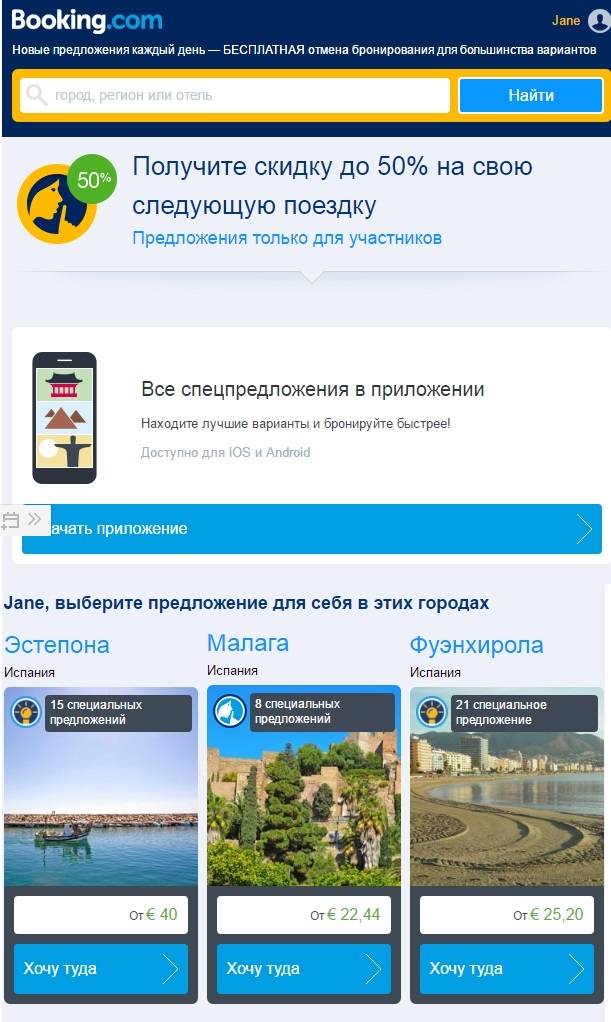
In this case, the potential buyer moved one step closer to the purchase, but for some reason did not complete the action. Most often frightened by unforeseen expenses associated with the purchase of goods, or competitors offer more attractive prices.
It is not enough just to remind the left goods of a letter about an abandoned basket. His mission is to dispel all doubts that the buyer may assume. Offer a discount or free return shipping, as in the example below.
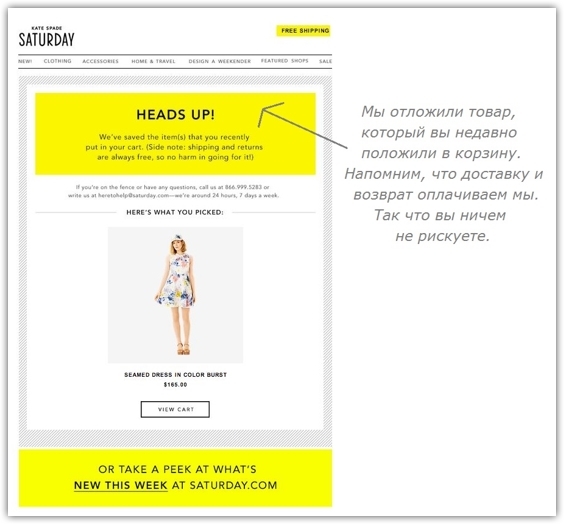
The optimal time to send a letter about an abandoned basket is from one to two days.
You have every chance to take the buyer down the funnel, and here's why :
Analyze the shopping interval and apply it on the mailing lists.
Suppose that a client contacts you once a year to change points or frames for them. It is better not to wait for him to place an order, but to remind him that he can take advantage of special bonuses or offer a discount - this will increase loyalty to your brand.
Take an example from the LensCrafters mailing list.
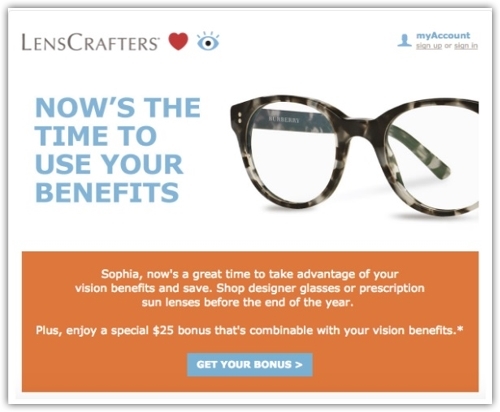
Loyal customers - a special caste. Treasure them and take care in the form of special bonuses and VIP discounts.
In SendPulse, you can designate a separate segment as “active” and work with it separately.

Email integration with popular CRM and CMS systems is an inexhaustible source of data for customer segmentation.
Villacarte, a company that sells real estate in exotic countries, creates personalized newsletters using the integration of SendPulse with Bitrix .
Below you can see Bitrix’s client profile. In the process, the manager found out that the client is interested in renting a villa on Koh Samui and speaks Russian. Using the SendPulse module integrated into Bitrix, a distribution with similar offers will be sent to the client.
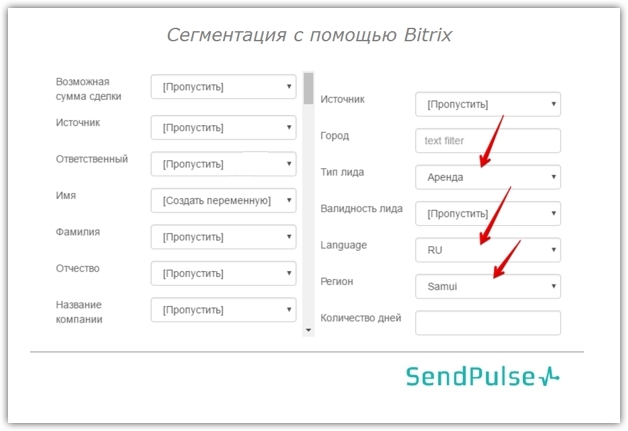
Finish Line is a retail store for sports shoes and clothing in the United States. At the MarketingSherpa conference, Aaron Buchanan, Finish Line's online personalization manager, explained with which types of segmentation the company achieved a 50% profit growth:
1. Segmentation based on purchase history.
Were developed email campaigns that started immediately after the purchase of goods. If a client bought clothes, he was sent a letter with an offer to buy shoes and vice versa.
2. Segmentation based on brand preferences.
On the mailing settings page, the Finish Line subscriber chooses the brands he wants to receive information about in the email newsletters.
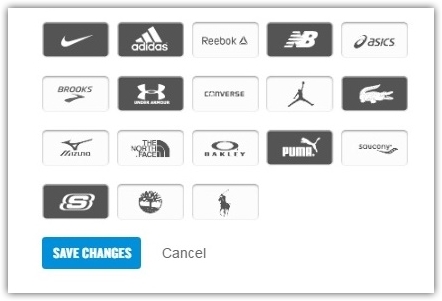
3. Segmentation based on click history.
Using click tracking, the Finish Line determines which content to attach to the email.
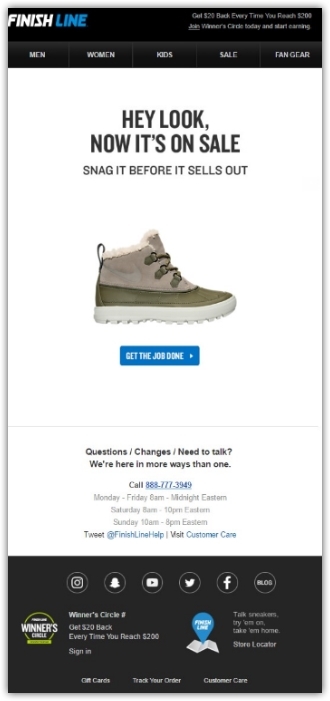
Aaron Buchanan also stressed that segmentation should not completely isolate the subscriber from other products.
Here is how it looks in practice. Nike makes targeted offers in its mailings, segmented by sex, and always leaves a block in which you can see the other offers: “For men”, “For women”, “For boys” and “For girls”.
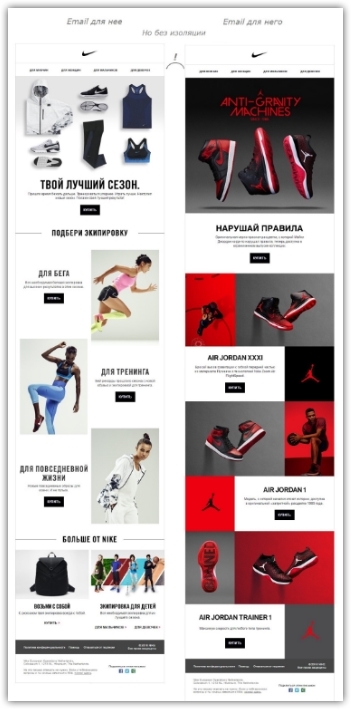
Take full advantage of automated email marketing platforms and use data and useful insights in long-term strategies. This will increase conversion and customer loyalty.
How to turn a subscriber into a buyer using drip campaigns
How much does it cost to attract a client
In continuation of the topic, we will talk about working with data that was the result of the subscriber’s interaction with your newsletters and the site. And how Finish Line increased sales through segmentation by 50%.

Photo by Rob Sinclair (Flickr)
• Clicks in the mailing list
Analyze the statistics of several previous mailings, in particular, the map of clicks. This will help you determine what the particular user likes more: watch videos, photos or read blog materials.
')
This type of segmentation works well in the initial stages of drip email campaigns. The subscriber can smoothly lead to the target action by “warming up” it with suitable content.

• View site page
Segmentation based on the pages viewed on the site is primarily relevant for eCommerce. Users can view dozens of pages of products, of which they will like one or two. Then they can even return to the page of the product they like, in order to take a closer look at it, but never make a purchase.
Having selected such users in a separate segment, create a chain of trigger letters with a reminder of the products viewed. Moreover, the conversion of trigger ezines is two to five times higher than that of ordinary advertising letters.
Since the purpose of such letters is to incline to purchase, you need to demonstrate all the advantages of the product. Insert an attractive photo of good quality, add a clear and visible call to action. Psychological triggers that appeal to a sense of urgency or possession also work well.
Here is an example of such a letter from Booking.com

Abandoned basket
In this case, the potential buyer moved one step closer to the purchase, but for some reason did not complete the action. Most often frightened by unforeseen expenses associated with the purchase of goods, or competitors offer more attractive prices.
It is not enough just to remind the left goods of a letter about an abandoned basket. His mission is to dispel all doubts that the buyer may assume. Offer a discount or free return shipping, as in the example below.

The optimal time to send a letter about an abandoned basket is from one to two days.
You have every chance to take the buyer down the funnel, and here's why :
- Nearly half of the abandoned basket letters open;
- 13.3% of open letters are clicked;
- 1/3 generate a purchase from the cart.
- Purchase once a year
Analyze the shopping interval and apply it on the mailing lists.
Suppose that a client contacts you once a year to change points or frames for them. It is better not to wait for him to place an order, but to remind him that he can take advantage of special bonuses or offer a discount - this will increase loyalty to your brand.
Take an example from the LensCrafters mailing list.

Active clicks in letters, purchases, reviews, participation in promotions
Loyal customers - a special caste. Treasure them and take care in the form of special bonuses and VIP discounts.
In SendPulse, you can designate a separate segment as “active” and work with it separately.

• Integration with CRM and CMS
Email integration with popular CRM and CMS systems is an inexhaustible source of data for customer segmentation.
Villacarte, a company that sells real estate in exotic countries, creates personalized newsletters using the integration of SendPulse with Bitrix .
Below you can see Bitrix’s client profile. In the process, the manager found out that the client is interested in renting a villa on Koh Samui and speaks Russian. Using the SendPulse module integrated into Bitrix, a distribution with similar offers will be sent to the client.

Finish Line through segmentation increased profits by 50%
Finish Line is a retail store for sports shoes and clothing in the United States. At the MarketingSherpa conference, Aaron Buchanan, Finish Line's online personalization manager, explained with which types of segmentation the company achieved a 50% profit growth:
1. Segmentation based on purchase history.
Were developed email campaigns that started immediately after the purchase of goods. If a client bought clothes, he was sent a letter with an offer to buy shoes and vice versa.
2. Segmentation based on brand preferences.
On the mailing settings page, the Finish Line subscriber chooses the brands he wants to receive information about in the email newsletters.

3. Segmentation based on click history.
Using click tracking, the Finish Line determines which content to attach to the email.

Aaron Buchanan also stressed that segmentation should not completely isolate the subscriber from other products.
Here is how it looks in practice. Nike makes targeted offers in its mailings, segmented by sex, and always leaves a block in which you can see the other offers: “For men”, “For women”, “For boys” and “For girls”.

Take full advantage of automated email marketing platforms and use data and useful insights in long-term strategies. This will increase conversion and customer loyalty.
Read also on the SendPulse blog:
How to turn a subscriber into a buyer using drip campaigns
How much does it cost to attract a client
Source: https://habr.com/ru/post/319030/
All Articles